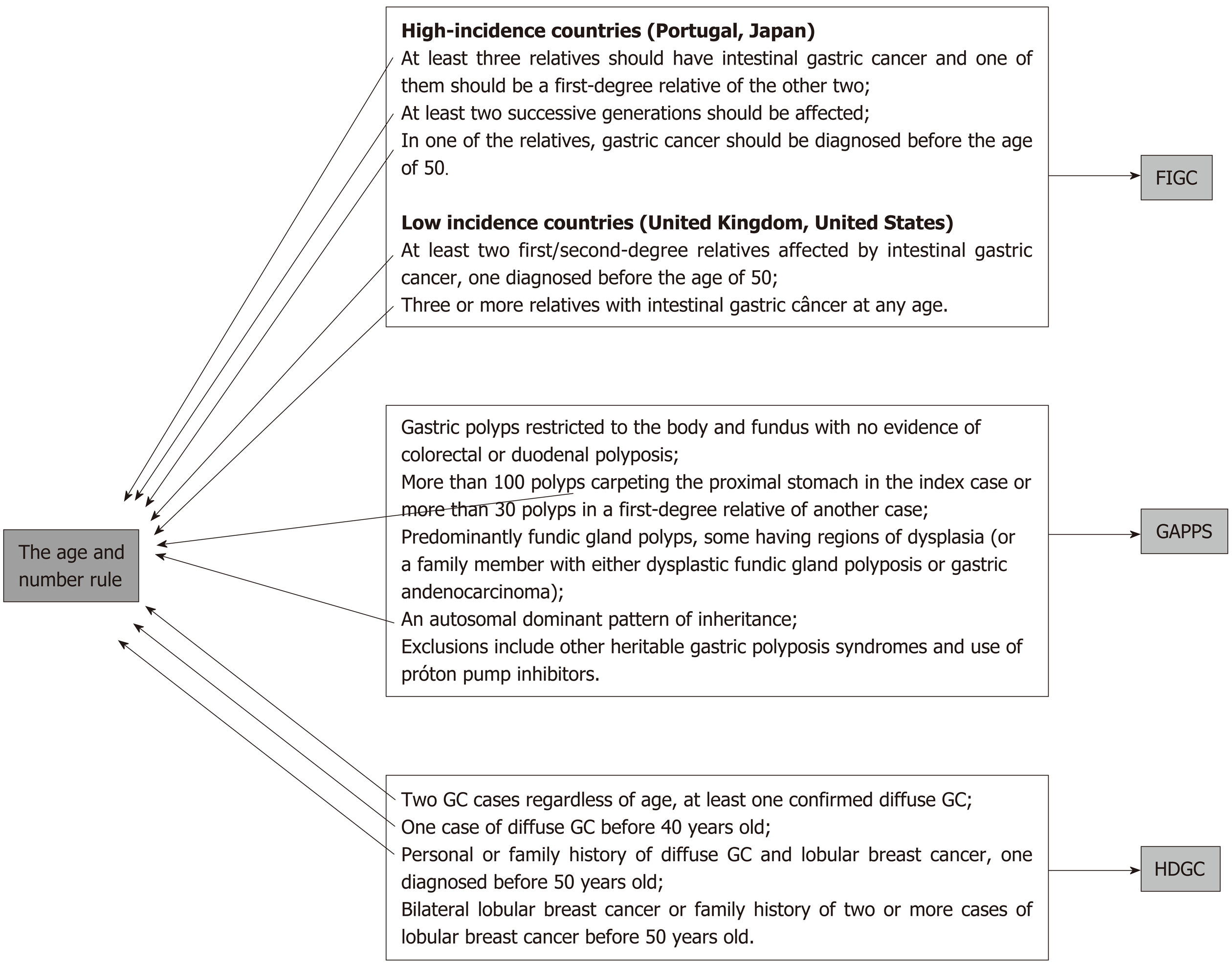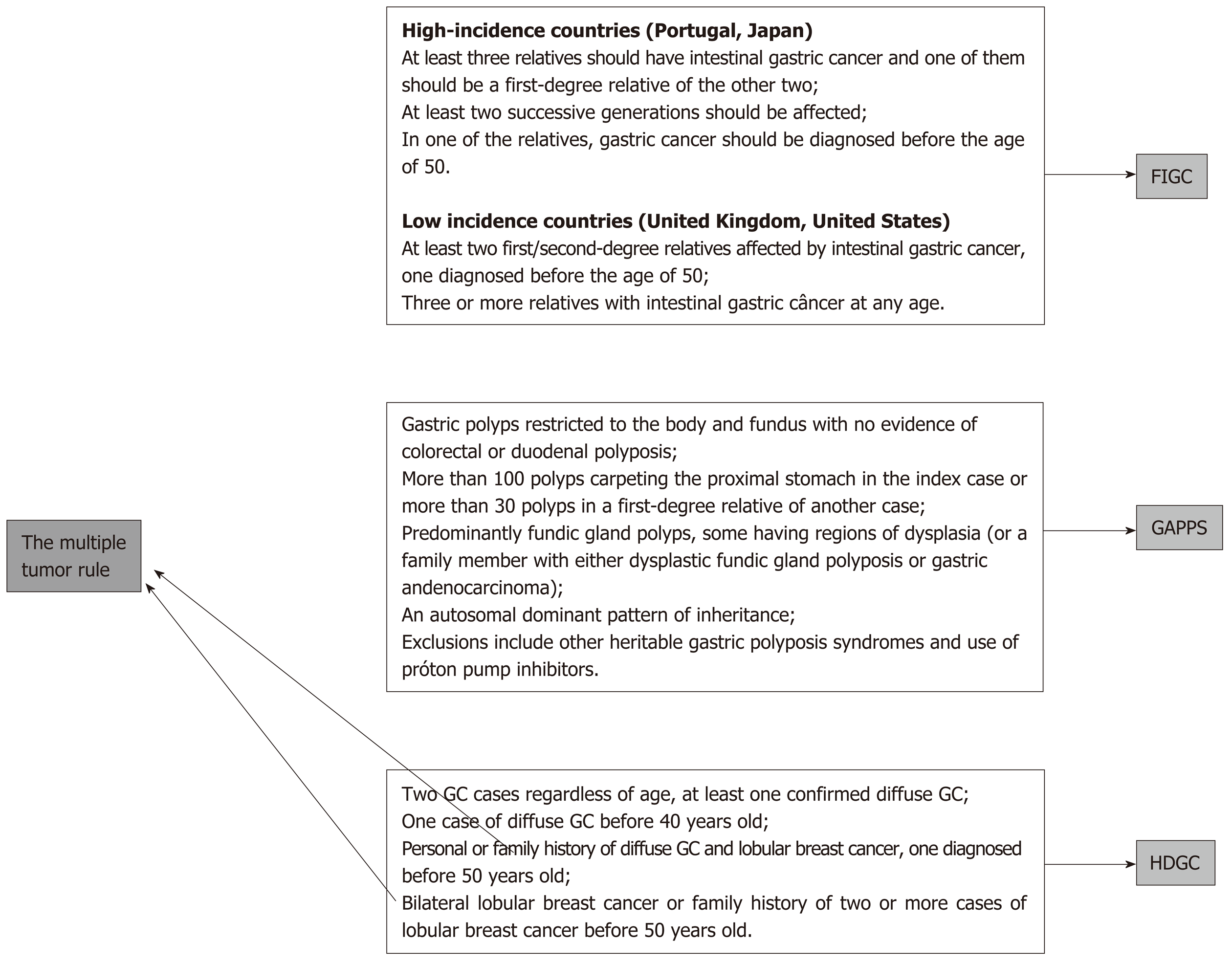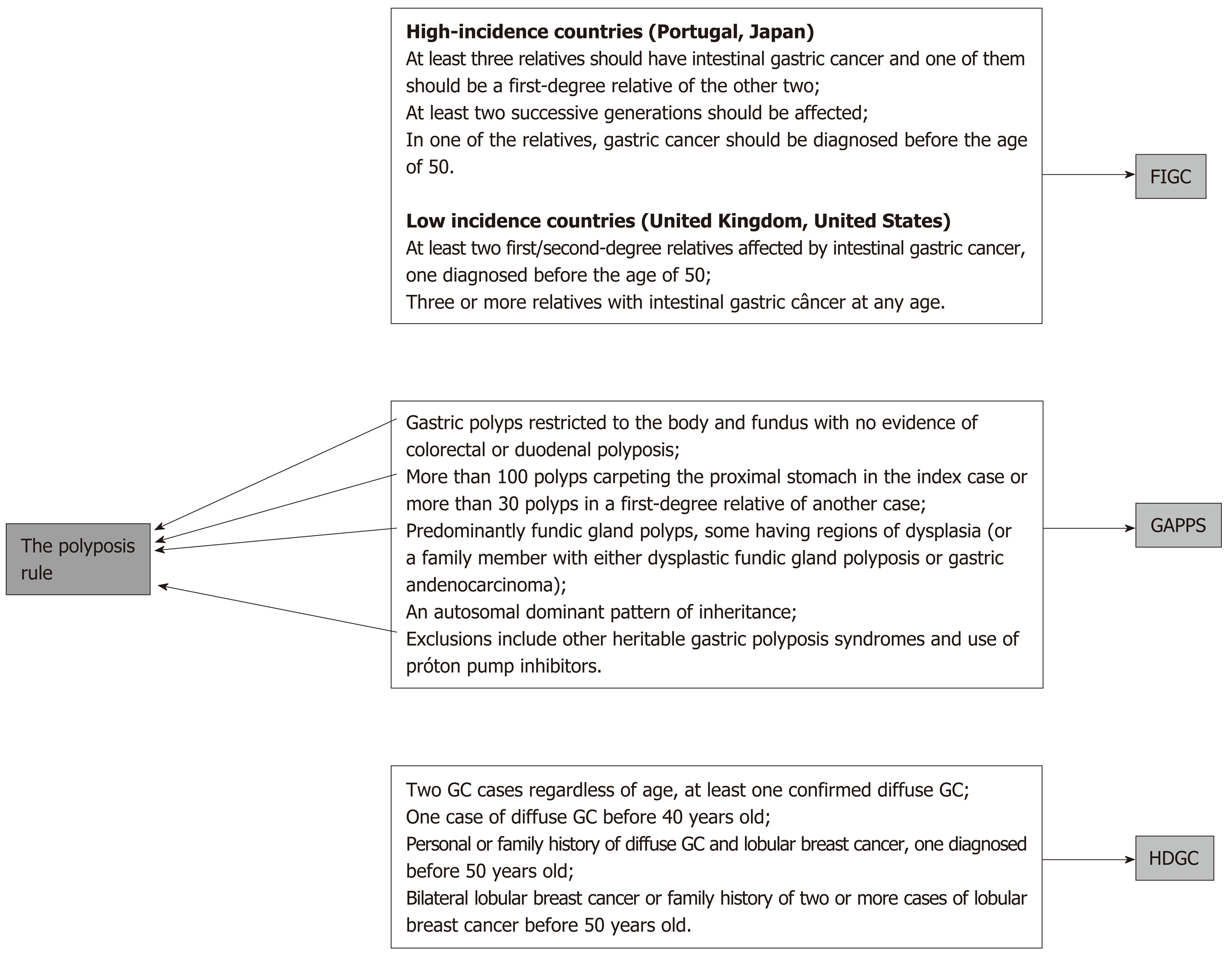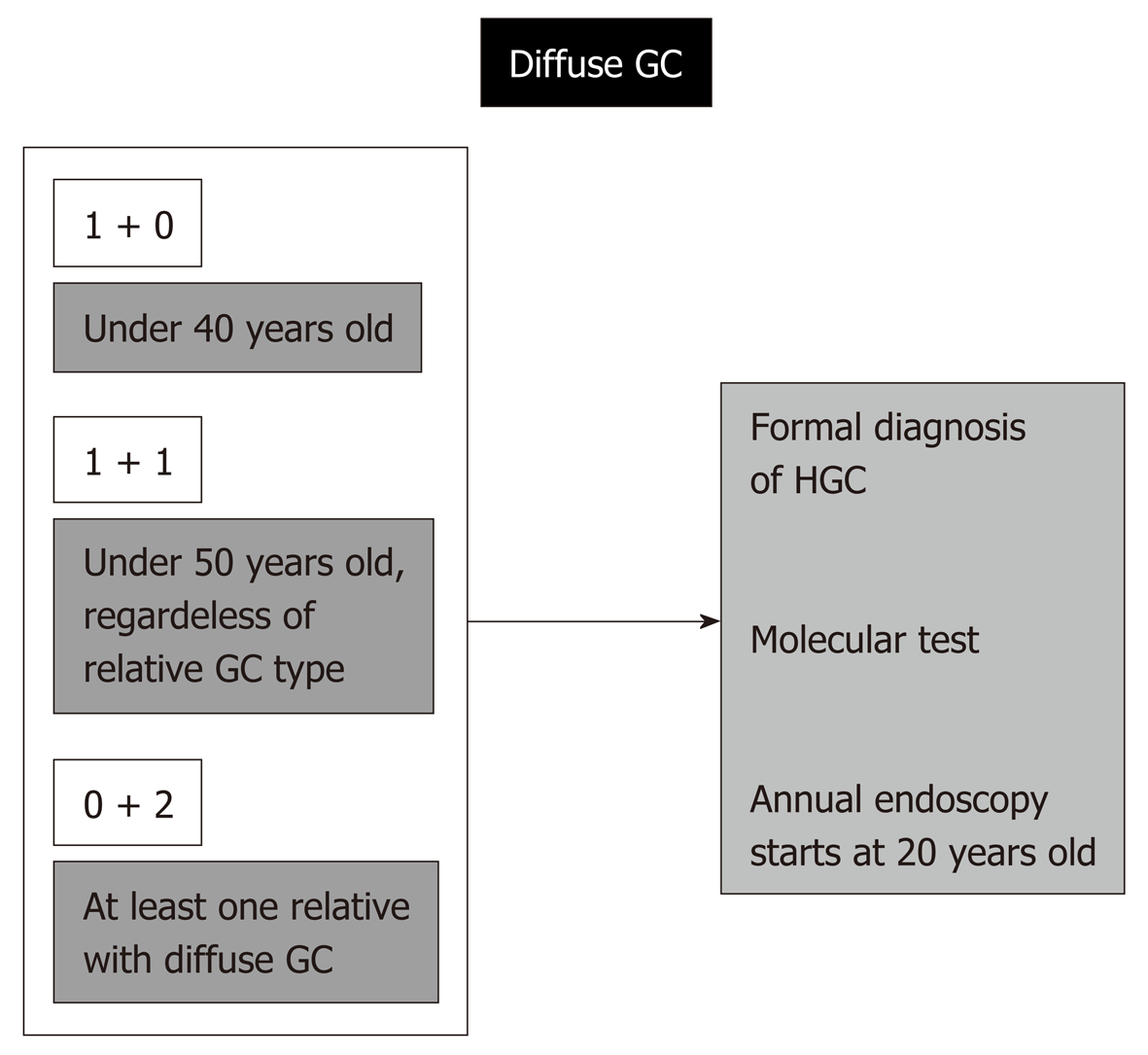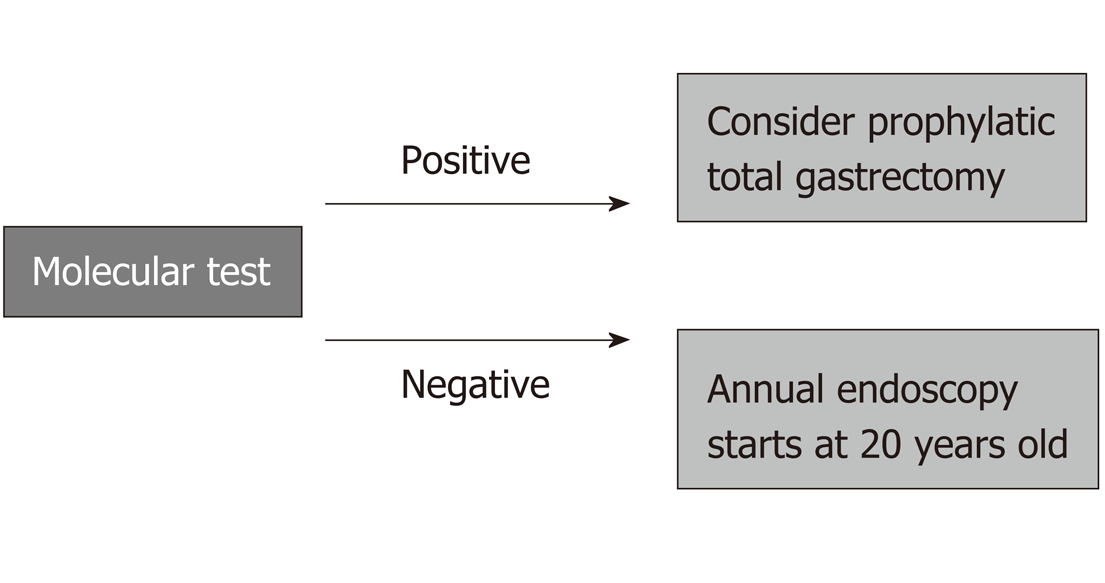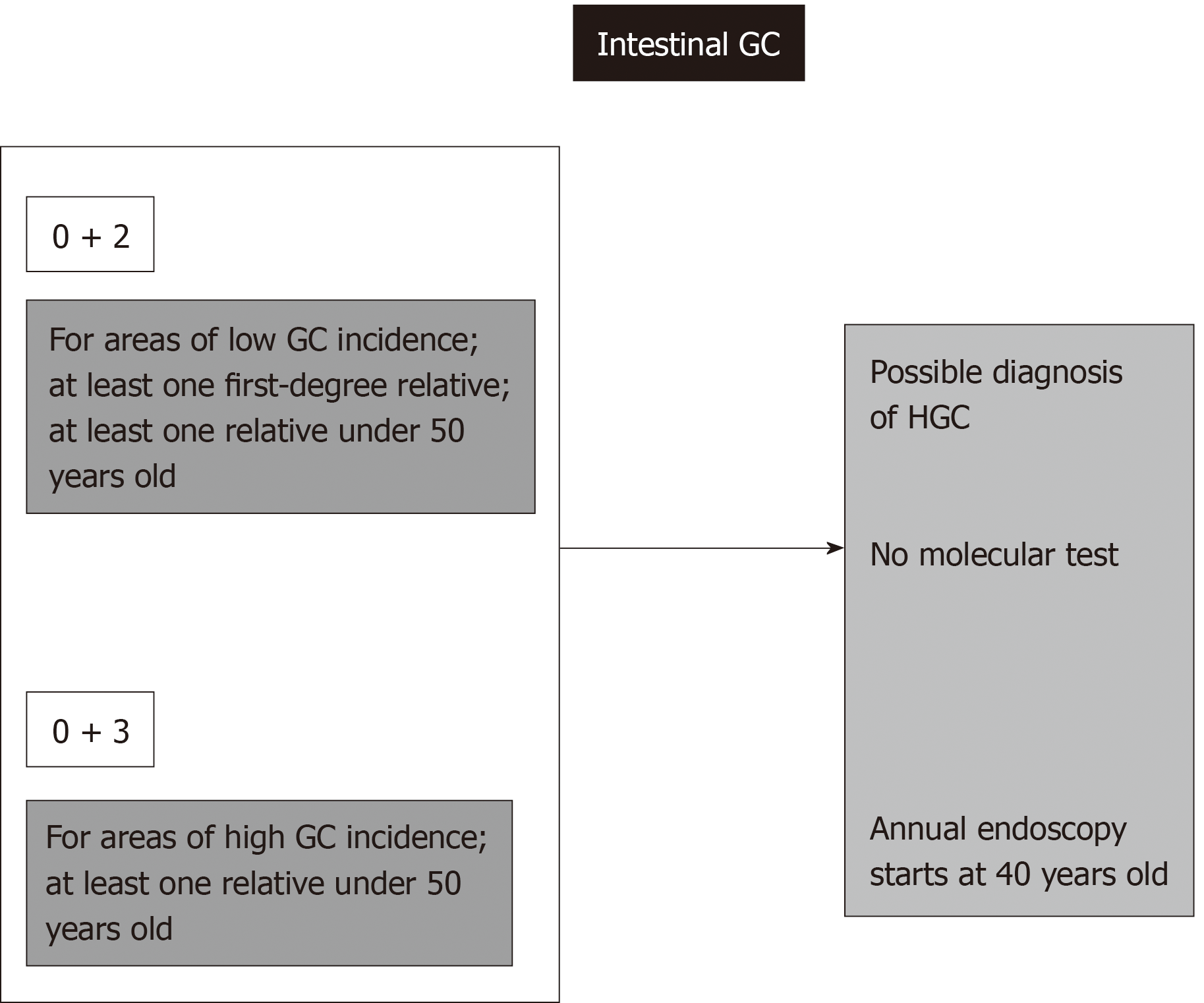Copyright
©The Author(s) 2020.
World J Gastroenterol. Apr 7, 2020; 26(13): 1382-1393
Published online Apr 7, 2020. doi: 10.3748/wjg.v26.i13.1382
Published online Apr 7, 2020. doi: 10.3748/wjg.v26.i13.1382
Figure 1 Diagnosis criteria for hereditary gastric cancer caught by rule number 1.
GC: Gastric cancer; FIGC: Familial intestinal gastric cancer; GAPPS: Gastric adenocarcinoma and proximal polyposis of stomach; HDGC: Hereditary diffuse gastric cancer.
Figure 2 Diagnosis criteria for hereditary gastric cancer caught by rule number 2.
GC: Gastric cancer; FIGC: Familial intestinal gastric cancer; GAPPS: Gastric adenocarcinoma and proximal polyposis of stomach; HDGC: Hereditary diffuse gastric cancer.
Figure 3 Diagnosis criteria for hereditary gastric cancer caught by rule number 3.
GC: Gastric cancer; FIGC: Familial intestinal gastric cancer; GAPPS: Gastric adenocarcinoma and proximal polyposis of stomach; HDGC: Hereditary diffuse gastric cancer.
Figure 4 The three-rules strategy, comprising every current clinical criterion.
GC: Gastric cancer; FIGC: Familial intestinal gastric cancer; GAPPS: Gastric adenocarcinoma and proximal polyposis of stomach; HDGC: Hereditary diffuse gastric cancer.
Figure 5 How to diagnose and manage hereditary diffuse gastric cancer by applying rule number 1.
The first numbers in white squares refer to early-onset (under 50 years old) cases, and the second numbers refer to the quantity of affected relatives. GC: Gastric cancer; HGC: Hereditary gastric cancer.
Figure 6 Clinical management of hereditary diffuse gastric cancer syndrome.
Figure 7 How to diagnose and manage familial intestinal gastric cancer by applying rule number 1.
GC: Gastric cancer; HGC: Hereditary gastric cancer.
- Citation: Assumpção P, Araújo T, Khayat A, Ishak G, Santos S, Barra W, Acioli JF, Rossi B, Assumpção P. Hereditary gastric cancer: Three rules to reduce missed diagnoses. World J Gastroenterol 2020; 26(13): 1382-1393
- URL: https://www.wjgnet.com/1007-9327/full/v26/i13/1382.htm
- DOI: https://dx.doi.org/10.3748/wjg.v26.i13.1382









